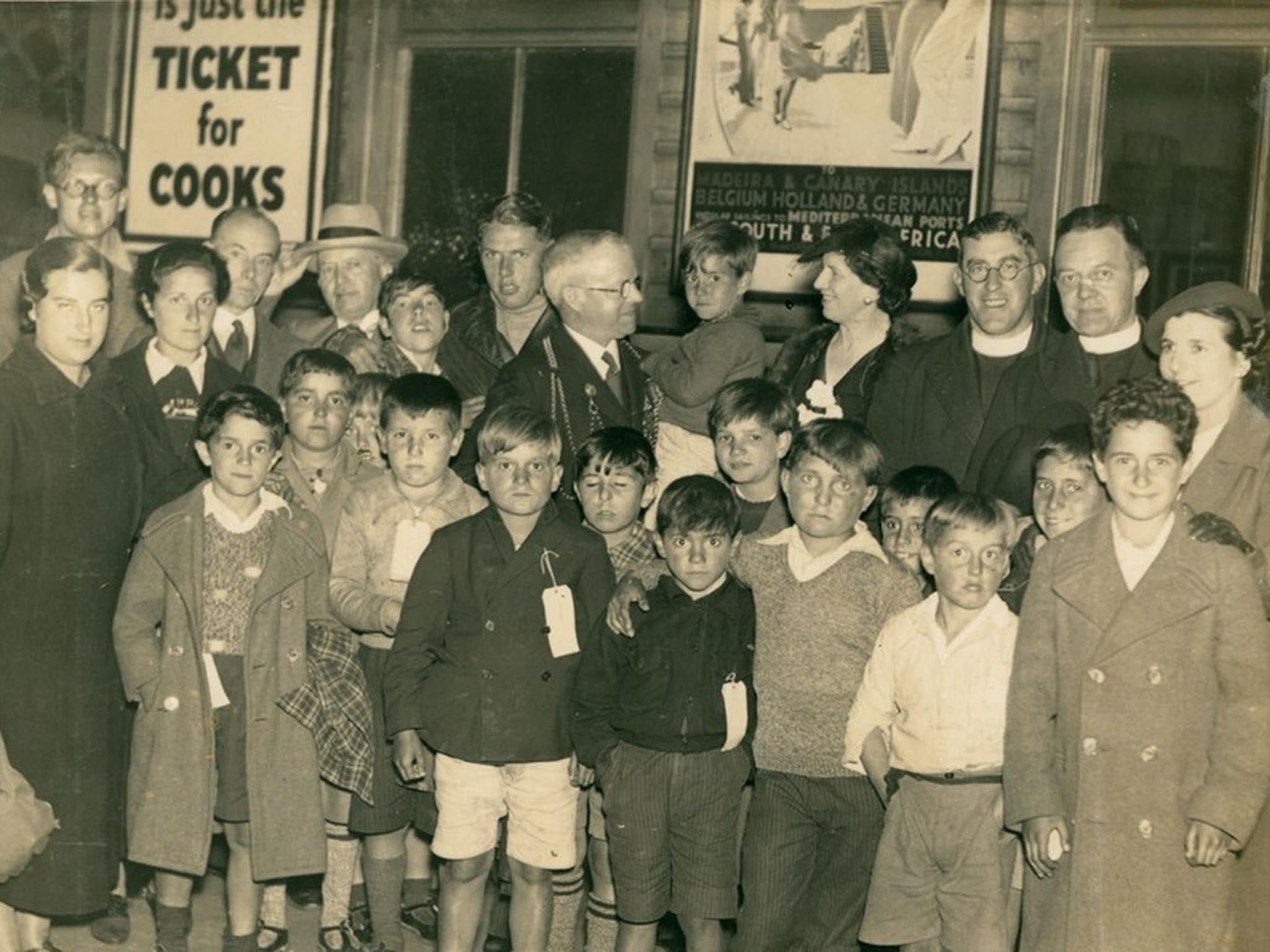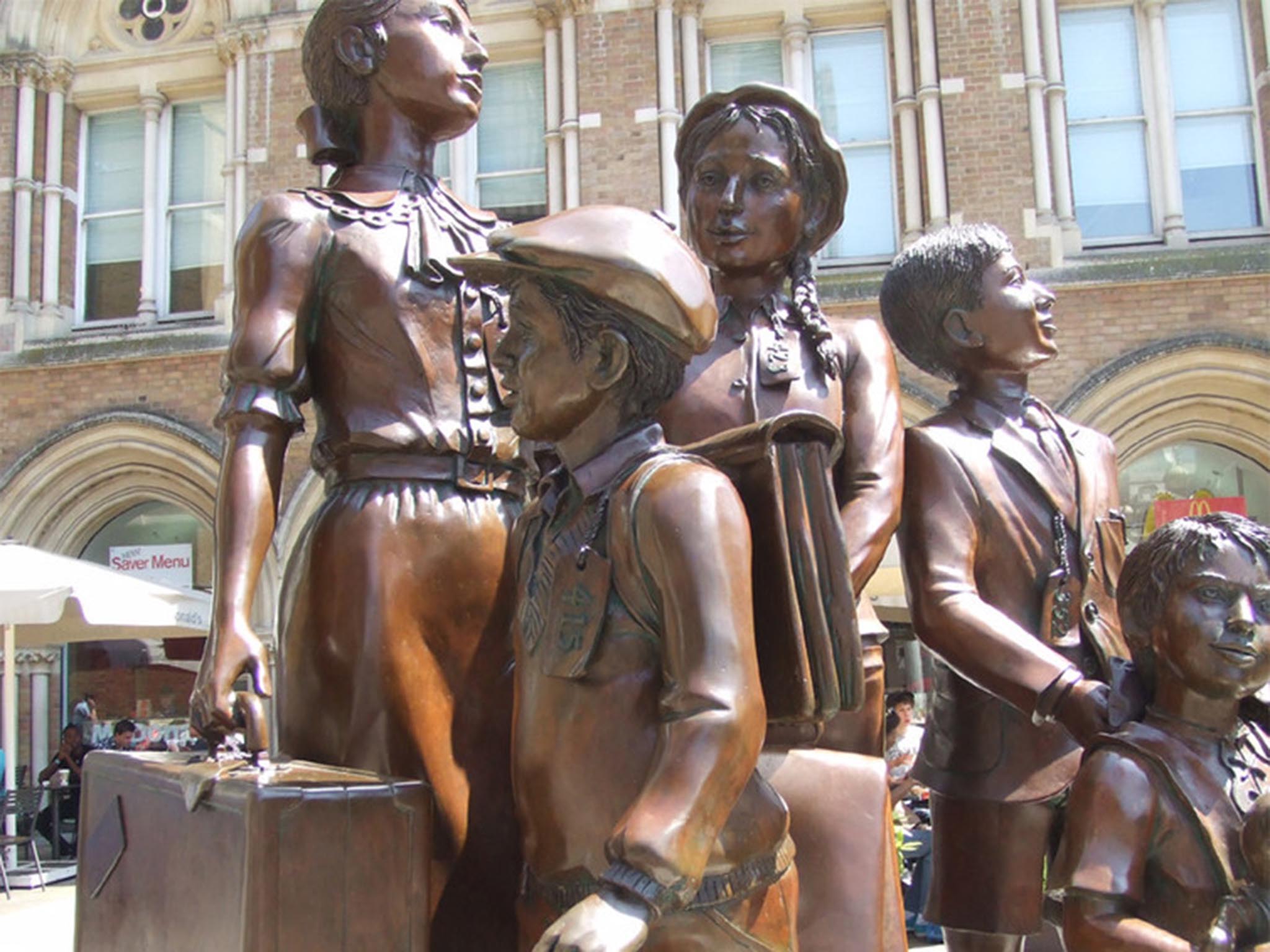British press suspicion of child refugees dates back to the 1930s
Mixed reactions to child refugees: the Daily Mail was quick to point out that the children would easily fit into Britain as many of them were 'as blonde as any English children' with 'bright blue eyes and lightly freckled skins'

Your support helps us to tell the story
From reproductive rights to climate change to Big Tech, The Independent is on the ground when the story is developing. Whether it's investigating the financials of Elon Musk's pro-Trump PAC or producing our latest documentary, 'The A Word', which shines a light on the American women fighting for reproductive rights, we know how important it is to parse out the facts from the messaging.
At such a critical moment in US history, we need reporters on the ground. Your donation allows us to keep sending journalists to speak to both sides of the story.
The Independent is trusted by Americans across the entire political spectrum. And unlike many other quality news outlets, we choose not to lock Americans out of our reporting and analysis with paywalls. We believe quality journalism should be available to everyone, paid for by those who can afford it.
Your support makes all the difference.The Government has squashed an attempt by MPs to restart a scheme which offered hope and protection to unaccompanied child refugees, that was shut down in February. Despite the fact that some local councils have said they would be willing to take in more refugee children if the government were to offer funding, the Conservatives decided to close the Dubs scheme – named after Alf Dubs whose amendment in the Lords introduced the commitment in 2016. A large number of MPs have protested the decision.
Britain has a long history of accepting child refugees – and Dubs himself was brought to the country as a child refugee from Czechoslovakia before the Second World War. But, even in the 1930s, the press was divided on the issue of child refugees, in ways that bear similarities to some recent media coverage.
Basque children in Britain
The media has always tended to agree that child refugees are usually considered most deserving of sympathy. During the 1930s, Britain offered help to many children, either on a fixed-term or permanent basis. In 1937, during the Spanish Civil War, Britain agreed to offer temporary sanctuary to several thousand children from northern Spain.
It was not a straightforward decision, as the British government was worried that helping Spanish children would compromise Britain’s neutrality. It was also concerned that the children might stay permanently and cost the taxpayer money. When these fears were overcome, the Spanish liner SS Habana arrived at the docks of Southampton with just under 4,000 children on board.
On their arrival, the newspapers were quick to offer praise for the rescue of these children. The Manchester City News wrote of a “pitiful cargo of … fatherless, homeless, bewildered children” that was being rescued by “the merciful arm of Britain”. The Daily Mail was quick to point out that the children would easily fit into Britain as many of them were “as blonde as any English children”, with “bright blue eyes and lightly freckled skins”. However, there were also risks associated with the large number of children arriving in Britain – and diseases such as typhoid, diphtheria, and measles were reported in The Times and the Daily Mail.
To begin with, the Basque children were reported on positively. The Manchester Guardian wrote that the children were “heartily welcomed by all sections of the community”, and communities were proud to be associated with them. It was not long though before trouble erupted. The Daily Mail coined the alliteration of “Bad Basque Boys”, which became a popular way to describe the children.
Undoubtedly there were bad Basque boys, who caused a “riot” in Brechfa, Carmarthenshire, as well as numerous disturbances across the country. Concerns were raised by MPs, who called for the children to be returned to Spain as quickly as possible because it was feared they were endangering the British public. Reports about violent disturbances helped to end feelings of humanitarianism towards Basque children, and eventually their time in Britain came to an end. Many of the children returned to Spain in 1938, just as more European children were arriving in Britain.
Jewish children to become ‘useful citizens’
From 1938, mostly Jewish children who were fleeing Nazi persecution started to arrive on the Kindertransport from Germany and Austria. While the Basque children had been seen as powerless victims of war, Jewish children were not yet considered in the same way, and there were fears spouted in the press that thousands of children would “overrun” the country.

The Basque children had mostly been able to continue their childhood in group homes for Basque children, and they were encouraged to keep their national identities. The Jewish children, though, were expected to become as British as possible, and many of the older girls were trained to work in domestic service and the boys in farming. As the Daily Mail explained in 1938:
“Many of the boys will be given instruction in agricultural work with a view to emigration to the colonies or to other countries offering employment.”
In another article, the Daily Mail talked about Jewish children who had survived “terror and deprivation to a new life that holds for them freedom, happiness, and careers”. The children had to become useful citizens in order to maintain positive press.
There was much protest in the 1930s about letting Jewish refugees into Britain from a variety of sources including the right-wing press, medical professionals and those living in deprived areas. People were still more concerned about what was happening in Spain and other parts of the world, rather than what was happening in Germany. Even after Kristallnacht in Germany in 1938, when the Nazis attacked Jews and their property, many of the local and national newspapers wrote about how neither politicians nor the general public should allow their emotions to cloud their vision, and reminded readers that there was a limit to how much charity could be offered to children.
For the limited number of children that the press did support coming to Britain, papers such as The Times and the Daily Mail emphasised that many of the children coming from Germany would be Christian, rather than Jewish children. This was in the hope that it would encourage people to be more charitable, even though Christian children were only ever a small proportion of those admitted via the transports.
The government and the media were keen to support schemes that would send Jewish children to Palestine, rather than support them in Britain. Ultimately, though, many thousands of Jewish children did remain in Britain, bringing great benefits to the country.
The Basque child evacuees are seldom mentioned these days, and the Kindertransport is now celebrated for its humanitarian achievements, but if you scratch the surface, the history of how welcoming the British press has been of child refugees is much more complicated than would first appear.
Rachel Pistol is an associate research fellow at the University of Exeter. This article first appeared on The Conversation (theconversation.com)
Join our commenting forum
Join thought-provoking conversations, follow other Independent readers and see their replies
Comments